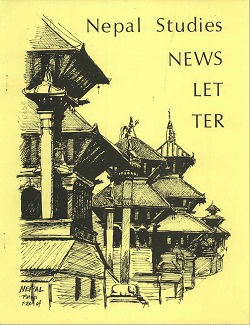Author Biography
Anne Mocko (PhD, Religious Studies, University of Chicago, 2012) is a scholar of South Asian religion, embodied social ideology, and political ritual. Her book Demoting Vishnu: Ritual, Politics and the Unraveling of Nepal’s Hindu Monarchy was released by Oxford University Press in 2016. She is an assistant professor of Asian religions at Concordia College in Moorhead, MN.
Shaunna Barnhart (PhD, Geography, Penn State University, 2012) is a geographer and political ecologist. Her previous research explored the growing use of biogas digesters in Nepal as a household energy strategy and its role in forest management, sustainable development, and global carbon trading. She is the director of the Place Studies program at Bucknell University’s Center for Sustainability and the Environment in Lewisburg, PA.
Abstract
In May of 2008, Nepal’s 240-year-old monarchy was legally dissolved. In the wake of this dissolution, the new interim government sought to replace royal institutions, procedures, and ceremonies with new, parallel processes. One unexpected royal legacy that politicians needed to resolve was that of the former royal animals that had been connected to the position of the King. The king of Nepal and palace institutions had been responsible for the welfare of a range of animals: private royal horses, a palace dairy herd, elephants in Chitwan, and an aviary of pheasants. Many of Nepal’s ex-royal animals have survived for years after the monarchy’s collapse, and many of them were left vulnerable, with no one clearly responsible for or dedicated to them in the new political context. The peculiar and marginalized fates of Nepal’s ex-royal animals highlight the profound institutional complexity the monarchy once entailed, and the far-reaching consequences of its dissolution. They also reveal the grudging and complex ways that parliamentary politicians and bureaucrats have handled some of the more inconvenient legacies of the institution they eliminated.
Acknowledgements
The authors would like to thank those who so generously shared their knowledge, expertise, and experience with them. In particular, the staff of the Narayanhiti Palace Museum, as well as the staffs of the Chitwan elephant facilities, Nagarjun National Forest, and the Singha Durbar cavalry outpost were all exceptionally gracious in allowing access to their time and spaces. The authors would like to express enduring gratitude to research assistant, Devendra Neupane, who has worked with both authors tirelessly to arrange meetings, assist with interviews, and transcribe interviews (both for this project specifically, but also for each author’s separate scholarship). The authors would particularly like to thank the two anonymous reviewers for their immensely valuable feedback on the article. Their thoughtful and detailed responses are especially responsible for the attention to patterns of animal naming, and the authors appreciated their insight on animal studies literature. This article emerged out of overlaps in the authors’ broader research, which has been funded through a variety of institutions and agencies, including two Fulbright Hays Doctoral Dissertation Research Awards, a National Science Foundation Doctoral Dissertation Research Improvement Grant BCS-0902865, a Society of Woman Geographers National and Pruitt Fellowship, a University of Chicago Harper fellowship, and a travel grant from Allegheny College’s Andrew W. Mellon Foundation award.
Creative Commons License

This work is licensed under a Creative Commons Attribution-Noncommercial-No Derivative Works 4.0 License.
Recommended Citation
Mocko, Anne and Barnhart, Shaunna. 2018. All the King’s Horses, All the King’s Elephants: The Fates of Royal Animals in Nepal’s Post-Monarchy Period. HIMALAYA 38(1).
Available at:
https://digitalcommons.macalester.edu/himalaya/vol38/iss1/8
Figure 1: Loktantra-Kali (“Democracy, the Elephant”) in center-foreground, with her mother, Aishwarya-Mala, left. [Photo credit: Anne Mocko. 2010.]
Figure 2 - Gyanendra Prasad staked outside main shelter.tiff (3353 kB)
Figure 2: Gyanendra-Prasad, staked outside the shelter. [Photo credit: Anne Mocko. 2010.]
Figure 5 - Cow Name List.tiff (29408 kB)
Figure 3. List of cow names as posted on Narayanhiti Palace barn wall. [Photo credit: Shaunna Barnhart. 2013].
Figure 4 - Former Royal Cows.tiff (29408 kB)
Figure 4. Former royal cows at Narayanhiti Palace barn, two months before being sent to Jiri. [Photo credit: Shaunna Barnhart. 2010].
Figure 8 - Cows in Barn.tiff (29407 kB)
Figure 4. Former royal cows at Narayanhiti Palace barn, two months before being sent to Jiri. [Photo credit: Shaunna Barnhart. 2010].
Figure 9 - Abandoned Barn.tiff (29408 kB)
Figure 5. The abandoned cow barn at Narayanhiti Palace, about 3 years after the remnants of the former royal dairy herd were sent to auction. [Photo credit: Shaunna Barnhart. 2013].
Figure 3 - Sundar Mala.tiff (3228 kB)
Remove
Figure 6a - Bull painting 2010.tiff (29408 kB)
Remove
Figure 6b - Bull Painting 2013.tiff (29408 kB)
Remoe
Figure 7 - Calf.tiff (29408 kB)
Remove


